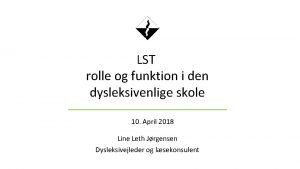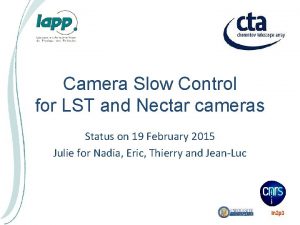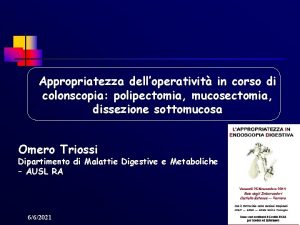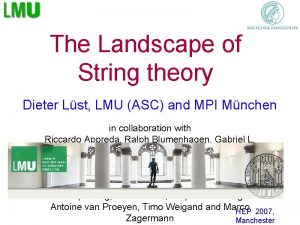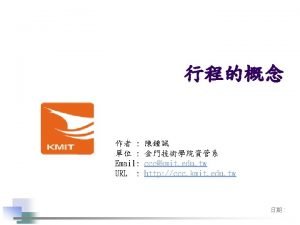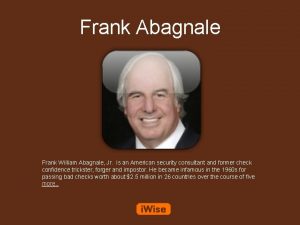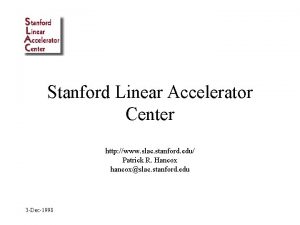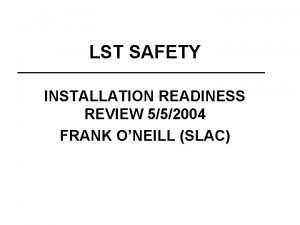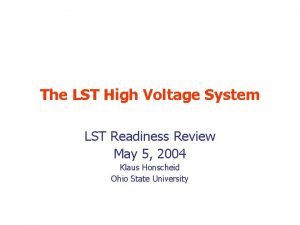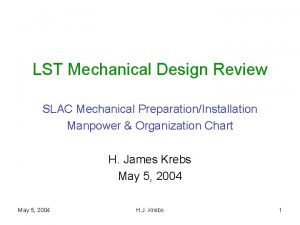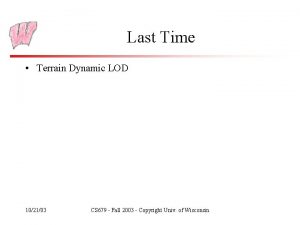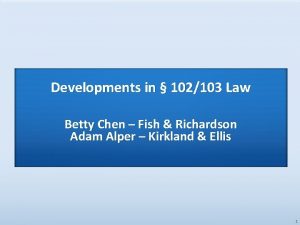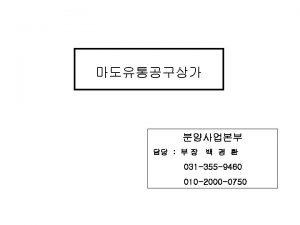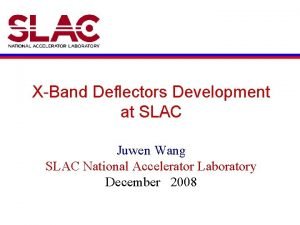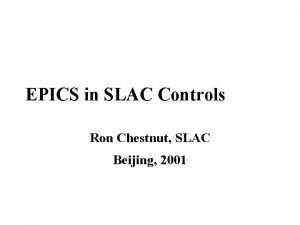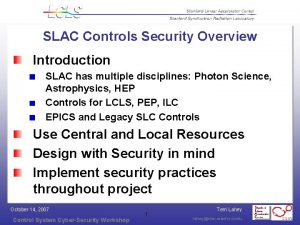LST SAFETY FRANK ONEILL SLAC 102103 SAFETY ISSUES











- Slides: 11

LST SAFETY FRANK O’NEILL (SLAC) 10/21/03

SAFETY ISSUES • • Seismic Fire Electrical Environmental

SIESMIC SAFETY • ~10, 000 kg of brass per sextant. • Approval from Earthquake Safety Committee 10/17/03

FIRE SAFETY ISSUES • Combustibility of LST material • Flammable Component of Gas Mixture • Wire and Cable Fire Safety Rating

LST MATERIAL COMBUSTABILITY • LST extrusion is constructed of plastic (PVC) – Rated Class V-0 in accordance with UL-94 (Tests of Flammability of Plastic Materials) – Loaded with 20% Calcium Carbonate This provides the PVC with some fire retardant properties • Small scale laboratory fire tests were conducted by Hughes Associates – ASTM E-1354 “cone calorimeter” test – Comparison of RPC and LST samples

Comparison of LST and RPC Material Time to Flaming (sec) Time to End of Flaming (sec) Peak HRR (k. W/m 2) Avg HRR (k. W/m 2) Calculated Flammability Parameter RPC-1 10 940 351. 5 111. 5 1. 10 RPC-2 10 910 340. 1 103. 1 1. 02 RPC-3 13 857 323. 7 118. 2 1. 17 RPC-AVG 11 902 338. 4 110. 9 1. 1 LST-1 65 93 119. 3 84. 3 0. 15 LST-2 68 112 86. 4 59. 5 -0. 01 LST-3 58 103 110. 3 74. 9 0. 18 LST-AVG 64 103 105. 3 72. 9 0. 1

TEST RESULTS • The PVC material exhibited significantly better ignitability and heat release rate characteristics than the existing RPC material • The PVC has a strong tendency to intumesce resulting in an insulating layer that inhibits flame spread

GAS MIXTURE • 3 components: Argon, Isobutane, and CO 2 • Similar Gas Mixtures utilized on other Detectors – SLD: 2. 5% Ar, 9. 5% isobutane, 88% CO 2 – ZEUS: 3% Ar, 8% isobutane, 89% CO 2 • Final decision on mixture pending • Nonflammable mixture will be utilized • Hughes Associates providing consulting services for evaluation of mixtures

Wire and Cable Fire Safety • High Voltage Cable meets the CERN, Safety Instruction 23 • Signal Cables meet the IEC 331 -1 (Flame and Fire Propagation Test)

Electrical Safety • High Voltage – Passive over-current protection in power supplies – ~5500 Volts and ~1 n. F a ~15 m. J. – Startle hazard • Low voltage – Read-out electronics in VME crates – Usual precautions such as fusing

ENVIRONMENTAL SAFETY • Bay Area Air Quality Management District (BAAQMD) issues SLAC a permit for discharge of VOCs – SLAC may need to modify the permit – Coordination with the SLAC Environmental Protection Department is ongoing



